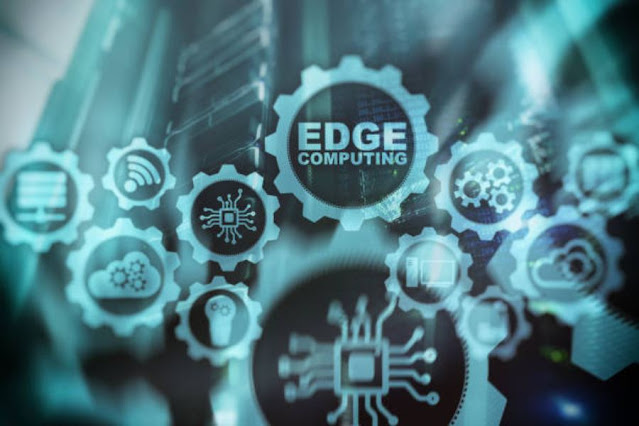
Unleashing the Power of Edge Computing Infrastructure: Revolutionizing Data Processing and Connectivity
Introduction:
Edge computing infrastructure is an innovative technology that brings computing resources closer to the data source, enabling faster data
processing, reduced latency, and improved connectivity. Unlike traditional
cloud computing models that rely on centralized data centers, edge computing
distributes computing power and storage to the network edge, bringing
processing capabilities closer to where data is generated. This article
explores the concept of edge computing infrastructure, its benefits,
applications, and its potential to revolutionize data processing and
connectivity.
Understanding Edge Computing Infrastructure:
Edge computing infrastructure refers to the decentralized
network of computing resources, including servers, storage devices, and
networking equipment, deployed at the edge of a network. This infrastructure
extends the capabilities of cloud computing by enabling data processing and
analytics to occur closer to the data source, reducing the need for data
transmission to centralized data centers.
Benefits of Edge Computing Infrastructure:
Edge computing infrastructure offers numerous benefits,
including:
a. Reduced Latency: By processing data at the network's edge,
edge computing significantly reduces the latency of transmitting data to centralized
cloud data centers. This is crucial for real-time applications such as
autonomous vehicles, industrial automation, and augmented reality, where
immediate data processing is essential.
b. Improved Bandwidth Efficiency: Edge computing
infrastructure optimizes network bandwidth usage by filtering and aggregating
data at the edge before transmitting it to the cloud. This reduces the amount
of data that needs to be sent over the network, resulting in improved network
efficiency and cost savings.
c. Enhanced Reliability: Edge computing infrastructure
improves reliability by reducing dependency on a single centralized data
center. Distributing computing resources across multiple edge locations
minimizes potential points of failure, ensuring uninterrupted operations even
in the event of network disruptions or data center failures.
d. Data Privacy and Security: Edge computing infrastructure
addresses privacy and security concerns by processing sensitive data closer to
its source. This reduces the risk of data breaches during data transmission to
remote data centers and allows for localized data storage and processing,
ensuring compliance with data protection regulations.
e. Real-Time Analytics: Edge computing enables real-time
data analytics and decision-making by processing data immediately at the edge.
This is particularly valuable in applications that require instant insights,
such as predictive maintenance, anomaly detection, and real-time monitoring.
Applications of Edge Computing Infrastructure:
Edge computing infrastructure has numerous applications
across various industries:
a. Internet of Things (IoT): IoT devices generate vast
amounts of data that require real-time processing and analysis. Edge computing
infrastructure enables IoT devices to process data locally, reducing latency,
improving responsiveness, and enabling faster decision-making.
b. Autonomous Vehicles: Edge computing is critical in
autonomous vehicles by enabling real-time data processing for perception,
decision-making, and control. By minimizing latency, edge computing
infrastructure enhances the safety and efficiency of autonomous driving
systems.
c. Smart Cities: Edge computing infrastructure supports the
development of smart cities by facilitating real-time data processing for
applications such as traffic management, environmental monitoring, public
safety, and energy optimization.
d. Industrial Internet of Things (IIoT): In industrial
settings, edge computing infrastructure enables real-time monitoring, control,
and optimization of manufacturing processes. Processing data locally enhances
operational efficiency, reduces downtime, and enables predictive maintenance.
e. Telecommunications: Edge computing infrastructure
enhances telecommunications networks' performance by enabling high-bandwidth
content processing, reducing latency for real-time applications, and optimizing
network traffic management.
Challenges and Considerations:
Despite its potential, edge computing infrastructure faces
several challenges:
a. Scalability: Deploying and managing a distributed network
of edge computing infrastructure at scale can be complex. Ensuring seamless
integration, efficient resource allocation, and centralized management across
edge locations require careful planning and coordination.
b. Network Connectivity: Edge computing relies on robust and
low-latency network connectivity. Ensuring reliable connectivity to edge
locations, especially in remote or challenging environments, may pose
challenges that must be addressed.
c. Security: Edge computing infrastructure introduces new security
considerations. Securing distributed edge devices, ensuring data privacy, and
protecting against cyber threats require robust security measures and ongoing
monitoring.
d. Standards and Interoperability: Developing standards and
ensuring interoperability across different edge computing infrastructure
components and vendors is essential for seamless integration and widespread
adoption.
Future Perspectives:
The future of edge computing infrastructure looks promising.
As more devices and applications generate vast amounts of data, the need for
real-time processing and low-latency connectivity will continue to grow.
Advancements in hardware, networking, and software technologies will drive the
evolution of edge computing infrastructure, making it more efficient, scalable,
and accessible. Integration with emerging knowhows such as 5G, AI, and machine
learning will additionally enhance the capabilities of edge computing,
unlocking new opportunities and use cases.
Conclusion:
Edge computing infrastructure revolutionizes data processing
and connectivity by bringing computing resources closer to the data source.
With reduced latency, improved bandwidth efficiency, and enhanced reliability,
edge computing infrastructure enables real-time analytics, supports IoT
applications, enhances autonomous systems, and drives innovation across various
industries. Overcoming scalability, network connectivity, security, and
standards challenges will be central for the widespread adoption of edge
computing infrastructure. As technology advances, edge computing will play a
pivotal role in the digital conversion journey, powering the next age group of
intelligent and connected systems.
Comments
Post a Comment